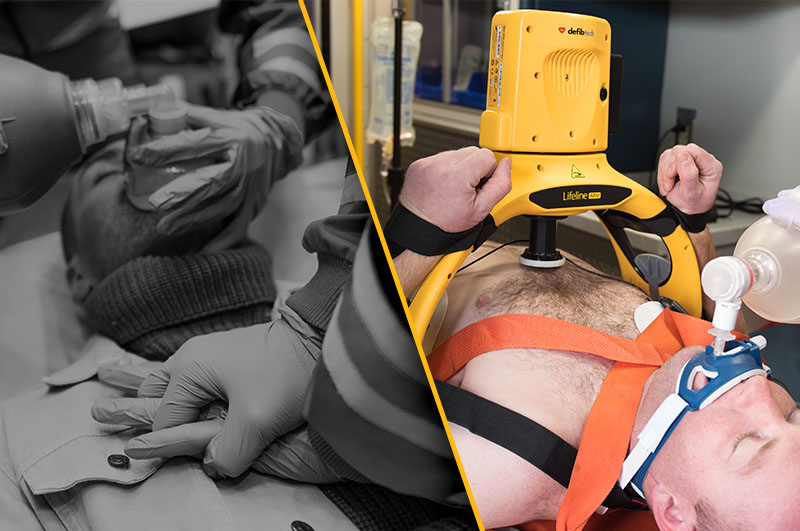The Importance of CPR in the Chain of Survival
December 2, 2022

Approximately 356,000 sudden cardiac arrests happen outside of the hospital each year and about 90% of these people die. The American Heart Association has developed a chain of survival that includes six crucial steps to saving someone’s life.
The links to the chain of survival
1) Activation of Emergency Response
2) Early CPR
3) Rapid Defibrillation
4) Advanced Resuscitation by Emergency Medical Services
5) Post Cardiac Arrest Care
6) Recovery
Immediate
Cardiopulmonary Resuscitation, or CPR, is crucial to helping save a life. When someone goes into sudden cardiac arrest their heart stops beating which in return eliminates oxygenated blood from moving throughout the body including the heart and lungs. Each minute that passes without oxygen flow through the body makes the odds of survival lower and lower.
CPR is comprised of two steps: giving chest compressions and giving breaths. Chest compressions are the most important part of CPR and we are going to focus on them here. If you are not in a position where you are comfortable giving breaths, you can provide “hands only CPR” to save a life. Hands only CPR means you are performing chest compressions only.
How to Perform CPR
To perform CPR, you want to be kneeling very close to the side of the person. Ideally, the person is laying on their back, on a HARD, FLAT surface. You put one knee at their shoulder and one at their waste. It is important to be up, over the person’s body. CPR can get very tiring, very quickly so you want to use your body weight to help you push down when performing chest compressions.
Place the palm of one hand right in the center of the chest, on the breastbone. Interlock your other hand on top of your first hand. Keep your elbows locked in and push down hard and fast on the center of the chest. You want to go at a rate of 100-120 compressions per minute. The key: go hard and fast.
When performing hands only CPR, don’t stop until either an AED arrives or until the ambulance arrives.
Advanced Resuscitation by Emergency Medical Services
The
fourth link in the chain of survival is Advanced Resuscitation by Emergency Medical Services. When the ambulance arrives, high quality CPR is still crucial to survival. We are proud to equip emergency medical services with our
Lifeline Arm Automated Chest Compression device. This device performs mechanical chest compressions when effective manual CPR is not possible.
Effective CPR requires a high level of excellence in order to have an impact on the survival rate of a cardiac arrest victim. This is very difficult to achieve manually when fatigue can occur in as little as 1-2 minutes while trying to maintain proper compressions at a minimum rate of 100 compressions per minute.
Additional Support
In an emergency situation, the Lifeline ARM when used as an adjunct to manual CPR, provides extended CPR with minimal interruptions when fatigue, insufficient personnel, or patient transport may prohibit the delivery of effective/consistent compressions to the victim. Its award-winning design provides portability, speedy deployment, and delivers precise CPR with unmatched operating times.
Effective and immediate chest compressions directly correlate to higher survival rates. Bystander CPR is necessary and when the ambulance arrives, Defibtech can equip all EMS professionals with the technology they need to continue the
chain of survival and help save a life!
To learn more about Defibtech and to join us on our quest to save lives from sudden cardiac arrest, visit
www.Defibtech.com.
